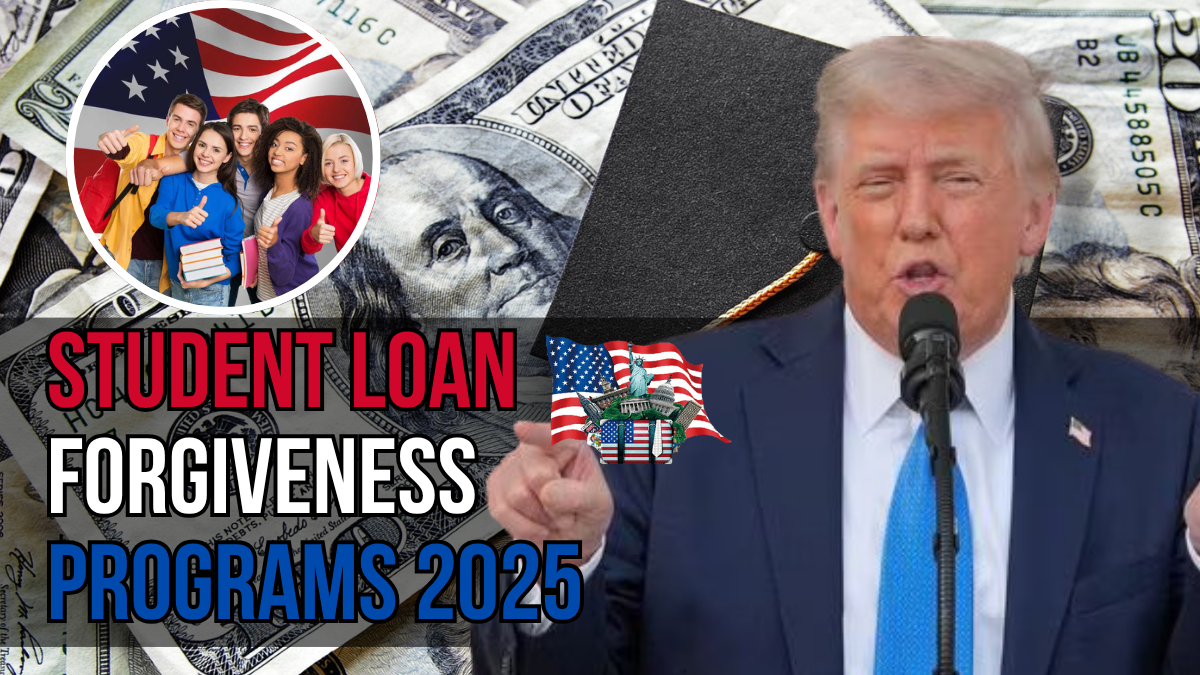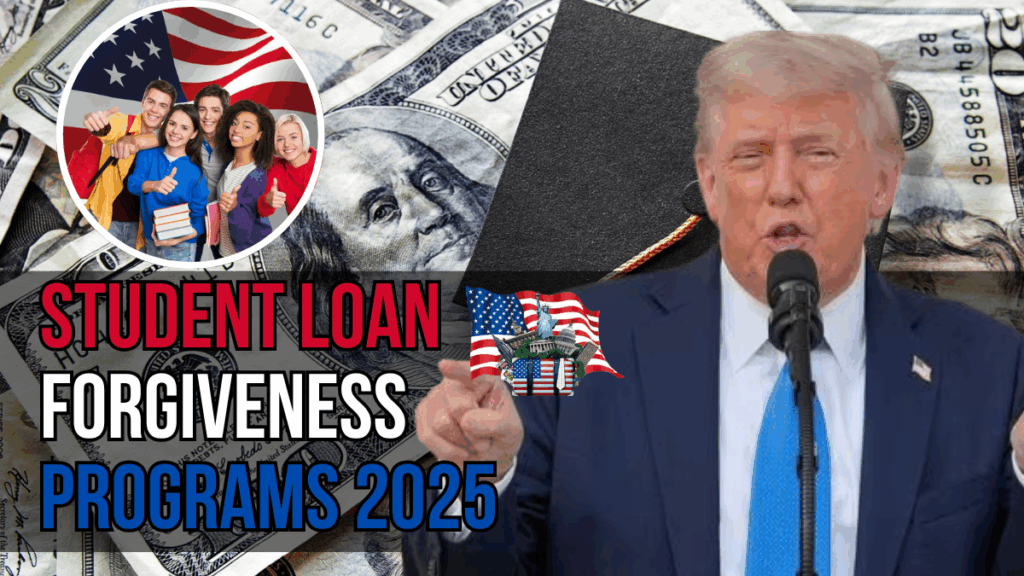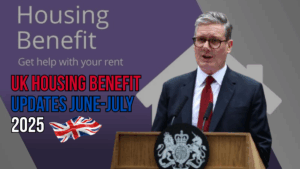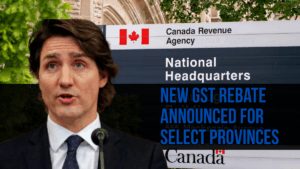With student debt reaching record highs—totaling nearly $1.8 trillion in the U.S. millions of borrowers are searching for meaningful financial relief. The average American borrower carries more than $41,000 in student loan debt, creating long-term challenges in homeownership, savings, and retirement planning. In response, the U.S. Department of Education has expanded and updated a range of federal student loan forgiveness programs designed to ease the burden for qualifying individuals.

Whether you’re a teacher, public service worker, military member, or simply repaying your loans through an income-driven plan, 2025 brings several key opportunities to have your student debt reduced—or even eliminated entirely. However, with court rulings affecting certain forgiveness plans like the SAVE Plan and some online application portals paused, it’s crucial to understand which programs are active, who qualifies, and how to apply correctly.
In this comprehensive guide, we break down the top student loan forgiveness options for 2025, eligibility criteria, repayment timelines, application processes, and what alternatives exist if you don’t qualify.
Summary Table: Key Student Loan Forgiveness Details
Detail |
Information |
|---|---|
Total U.S. Student Loan Debt |
$1.8 trillion |
Average Debt per Borrower |
$41,618 |
Types of Loans Covered |
Federal loans only (not private) |
Key Programs |
PSLF, IDR, Teacher Forgiveness, Perkins Cancellation, Military Forgiveness |
Application Status |
Some programs temporarily paused due to court injunctions |
Forgiveness Timeframes |
5 to 25 years depending on program |
Website for Updates |
Understanding Student Loan Forgiveness in 2025
The student loan debt crisis in the U.S. has reached unprecedented levels, with outstanding loans exceeding $1.8 trillion. The average borrower now owes more than $41,000, and millions struggle to manage repayments. Fortunately, multiple federal student loan forgiveness programs offer relief.
These programs are largely available only to federal student loan borrowers. Private loans are generally excluded. In this guide, we cover the latest updates, eligibility criteria, timelines, application process, and what to do if you don’t qualify.
Key Federal Student Loan Forgiveness Programs in 2025
1. Public Service Loan Forgiveness (PSLF)
- Eligibility: Full-time employment in government or a qualified nonprofit.
- Requirement: 120 qualifying monthly payments under an IDR plan.
- Forgiveness: Remaining loan balance after 10 years.
- Note: Requires strict documentation and eligible Direct Loans.
2. Income-Driven Repayment (IDR) Forgiveness
There are four major IDR plans:
- Pay As You Earn (PAYE)
- Saving on a Valuable Education (SAVE, formerly REPAYE)
- Income-Based Repayment (IBR)
- Income-Contingent Repayment (ICR)
Benefits of IDR Forgiveness:
- Lower monthly payments based on income and family size.
- Forgiveness after 20–25 years of consistent payments.
- Applies to: Direct Subsidized, Unsubsidized, and PLUS loans.
Important Update: Due to a federal court injunction, online applications for new IDR enrollment and loan consolidation are paused. Paper applications are still being accepted.
3. Teacher Loan Forgiveness (TLF)
- Forgiveness Amount: $5,000–$17,500 based on subject area.
- Eligibility:
- Full-time teacher at a low-income school for 5 consecutive years.
- Must not have had outstanding Direct Loans as of October 1, 1998.
- Applies to specific federal loans (e.g., Stafford, Direct Loans).
Note: You cannot receive TLF and PSLF credits for the same service period.
4. Perkins Loan Cancellation
- Eligibility: Teachers, nurses, law enforcement, and other public service employees.
- Forgiveness: Up to 100% of Perkins Loan.
- Disbursement: Canceled in increments over 5 years.
5. Military Service Forgiveness
- Eligibility: Active-duty military in eligible service branches.
- Forgiveness Amount: Up to 100% depending on service start date.
- Special Programs: Vary by military branch and loan type.
6. State-Specific and Other Niche Forgiveness Programs
- Examples:
- Massachusetts Loan Repayment for healthcare workers.
- School Closure Discharge.
- Forgiveness in case of death, disability, or fraud.
How to Apply for Student Loan Forgiveness
- Identify the Right Program: Match your employment, repayment history, and loan type.
- Collect Documentation:
- Employment certification
- Tax returns
- W-2s and pay stubs
- Complete the Application:
- Use StudentAid.gov for most applications.
- Some require mail-in forms (e.g., Teacher Loan Forgiveness).
- Monitor Application Status:
- Check online via your StudentAid account.
- Contact your loan servicer for updates.
What If You Don’t Qualify? Alternative Options
- Loan Consolidation: Combine multiple federal loans into one; may qualify for forgiveness later.
- Refinancing: Private lenders may offer better interest rates, but this removes federal protections.
- Deferment: Postpone payments temporarily, some loans may not accrue interest.
- Forbearance: Temporarily stop payments; interest typically continues to accrue.
Tax and Credit Considerations
- Forgiven loans are not considered taxable under temporary federal guidelines, but confirm each year.
- Impact on credit: Forgiveness may slightly lower your score due to reduced credit mix.
Eligibility Summary Table
Program |
Eligibility |
Timeframe |
Forgiveness |
PSLF |
Full-time nonprofit/government work |
10 years (120 payments) |
Full remaining balance |
IDR Forgiveness |
Income-based repayment |
20–25 years |
Full remaining balance |
TLF |
Teachers at low-income schools |
5 years |
$5,000–$17,500 |
Perkins Cancellation |
Public service workers |
5 years |
Up to 100% |
Military Forgiveness |
Active-duty service |
Varies |
Up to 100% |
Frequently Asked Questions (FAQ)
Q1: How long does it take to get student loan forgiveness?
A: PSLF requires 10 years; IDR plans range from 20 to 25 years.
Q2: Can private student loans be forgiven?
A: Generally, no. Forgiveness applies to federal student loans only.
Q3: Does forgiveness impact my credit score?
A: Possibly. A forgiven loan may lower your credit mix, slightly reducing your score.
Q4: Are forgiven loans taxable?
A: Currently, they are not considered taxable income under temporary federal relief laws.
Q5: What happens if I switch jobs while pursuing forgiveness?
A: For PSLF, employment must be full-time with a qualifying employer during all 120 payments and at the time of forgiveness.
For the most accurate and up-to-date information, visit the official site: https://studentaid.gov
For more information click here





